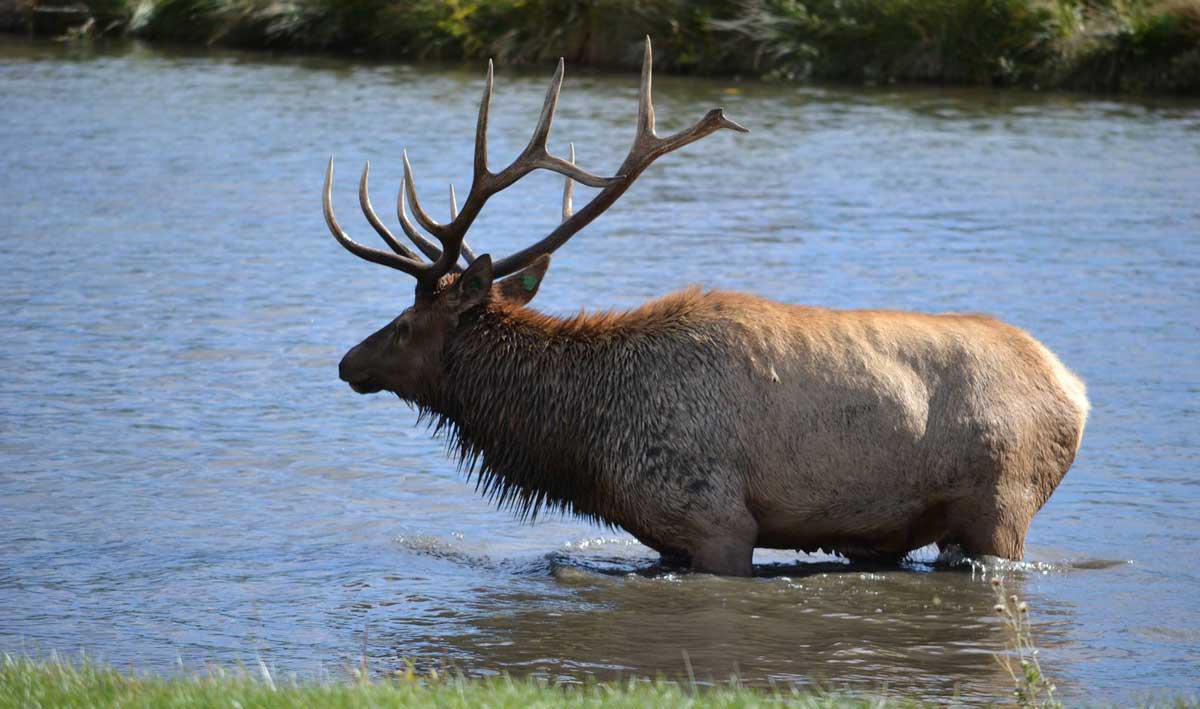All cervids are excellent swimmers. Hollow hair and rich fat help make elk buoyant and insulate them from the danger of hypothermia in frigid waters.
Yearly migration routes—particularly in mountainous areas—often require elk to cross creeks and rivers swollen from spring run-off. Calves only a few days old can navigate substantial rivers but may require days of coaxing before they’ll take the plunge. Reintroduced elk on Afognak Island in Alaska have been known to swim three miles to nearby Kodiak Island.
While being pursued by wolves, elk may retreat into waterways that largely protect them from predation. Native Americans, such as the Salish of Puget Sound, long took advantage of this tendency, driving elk into the sea with dogs and fire before clubbing them from canoes.
An elk’s natural endurance—from generations of fleeing predators in open country—allows it to power through long distances or rough waters. Of course, sometimes elk simply take a refreshing dip to cool off in the summer.
Photo c/o Faith Marlin
Elk NetworkAre Elk Good Swimmers?
Conservation | March 30, 2018

Latest Content
The Ammo You Can Bet Your Tag on: Trophy Grade™ Ammunition
As summer fades and fall approaches, hunters across the country are finalizing plans, checking gear, and preparing for the most anticipated time of year—big game [...]
Leupold Announces New SX-4 Pro Guide HD Gen 2 and SX-2 Alpine HD Gen 2 Spotting Scope Families
Leupold & Stevens, Inc., provider of the world’s most rugged, lightweight, and clear sport optics, is pleased to announce the launch of two new spotting [...]
Gear up for the Hunt with the Buck Knives Alpha Elites
Use code “RMEF20WAPITI” to save 20% off all Buck Hunting Knives at www.buckknives.com. (Valid 7/7/2025-10/15/2025) Every experienced hunter knows the different between good gear, and [...]